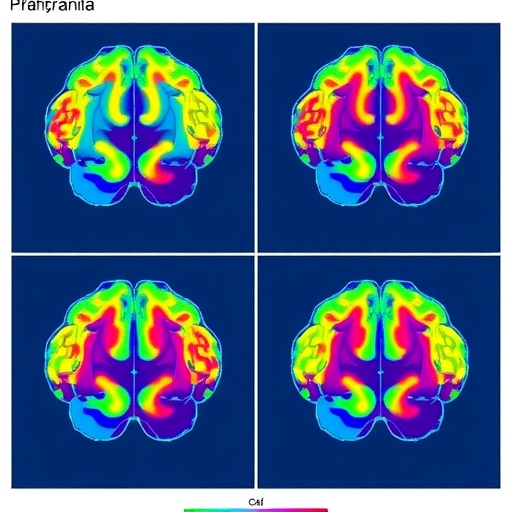Our brain uses filter systems to efficiently manage the gigantic amounts of information that flow over us. Neuronal alpha oscillations are among them. They help to reduce the flow of information in certain brain regions. The oscillations can be specifically influenced by special training. A team from the Neural Plasticity Lab at the Institute of Neuroinformatics at Ruhr-Universität Bochum (RUB) and the Department of Neurology at the RUB Hospital Bergmannsheil has discovered that test subjects can influence their learning success in a tactile task themselves. They report on the work in the journal Nature Communications on 16 January 2019.
Interplay of inhibition and disinhibition
Thanks to an interplay of inhibition and disinhibition of certain areas, our brain can always guarantee the processing of particularly important stimuli. Neuronal alpha-oscillations regulate the flow of information in certain regions of the brain so that capacities for the processing of new stimuli are released. “The correct timing of alpha oscillations is strongly related to performance in cognitive tasks and perception tests,” explains Dr. Hubert Dinse from the Institute of Neuroinformatics and the Department of Neurology at Bergmannsheil. So far, however, it has not been clear whether learning outcomes can also be influenced by alpha oscillations. In order to clarify this, the team, which also includes Hubert Dinse, Marion Brickwedde and Marie C. Krüger, taught young healthy people how to regulate their alpha oscillations up or down.
Thoughts and feelings influence the oscillations
For two consecutive days, the test subjects took part in what is known as neurofeedback training, during which they received real-time feedback on their brain signal in the form of colours on a computer screen. “In this way, the participants were able to learn which thoughts or feelings they could use to amplify or reduce alpha oscillations in touch-processing regions of the brain,” explains Marion Brickwedde. Following this, the right index finger of the participants was electrically stimulated for 20 minutes. This stimulates cortical learning processes and improves the sense of touch. This process is independent of previous experience, motivation or attention and thus enables a particularly efficient investigation of the cortical basics of learning.
Learning success intensifies or is absent
Participants who were able to successfully amplify their alpha oscillations experienced a particularly strong improvement in their sense of touch. In contrast, participants who reduced their alpha oscillations did not improve at all on average as a result of the stimulation.
Possible means in everyday life, rehabilitation and clinics
This process can be explained by a targeted neuronal distribution of resources. Strong alpha oscillations reduce information processing, releasing many neuronal resources that are then available for important incoming information. If only a few resources are available, as is the case with low alpha oscillations, information processing is less efficient. “Alpha neurofeedback training could therefore be a means of enhancing learning success in everyday, rehabilitative or clinical contexts,” concludes Hubert Dinse.
###
Funding
The work was supported by the German Research Foundation within the framework of the Collaborative Research Centre 874 and the International Graduate School of Neuroscience.
Original publication
Marion Brickwedde, Marie C. Krüger, Hubert R. Dinse: Somatosensory alpha oscillations gate perceptual learning efficiency, in: Nature Communications, 2018, DOI: 10.1038/s41467-018-08012-0
Media Contact
Dr. Hubert Dinse
[email protected]
49-234-322-5565
Related Journal Article
https:/
http://dx.




